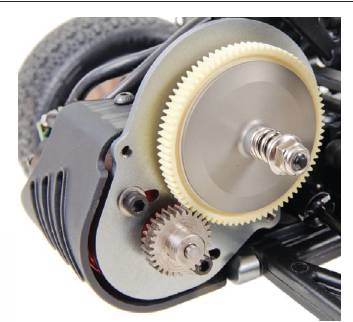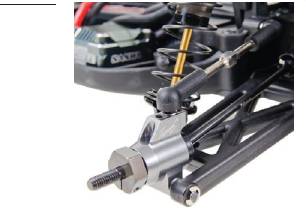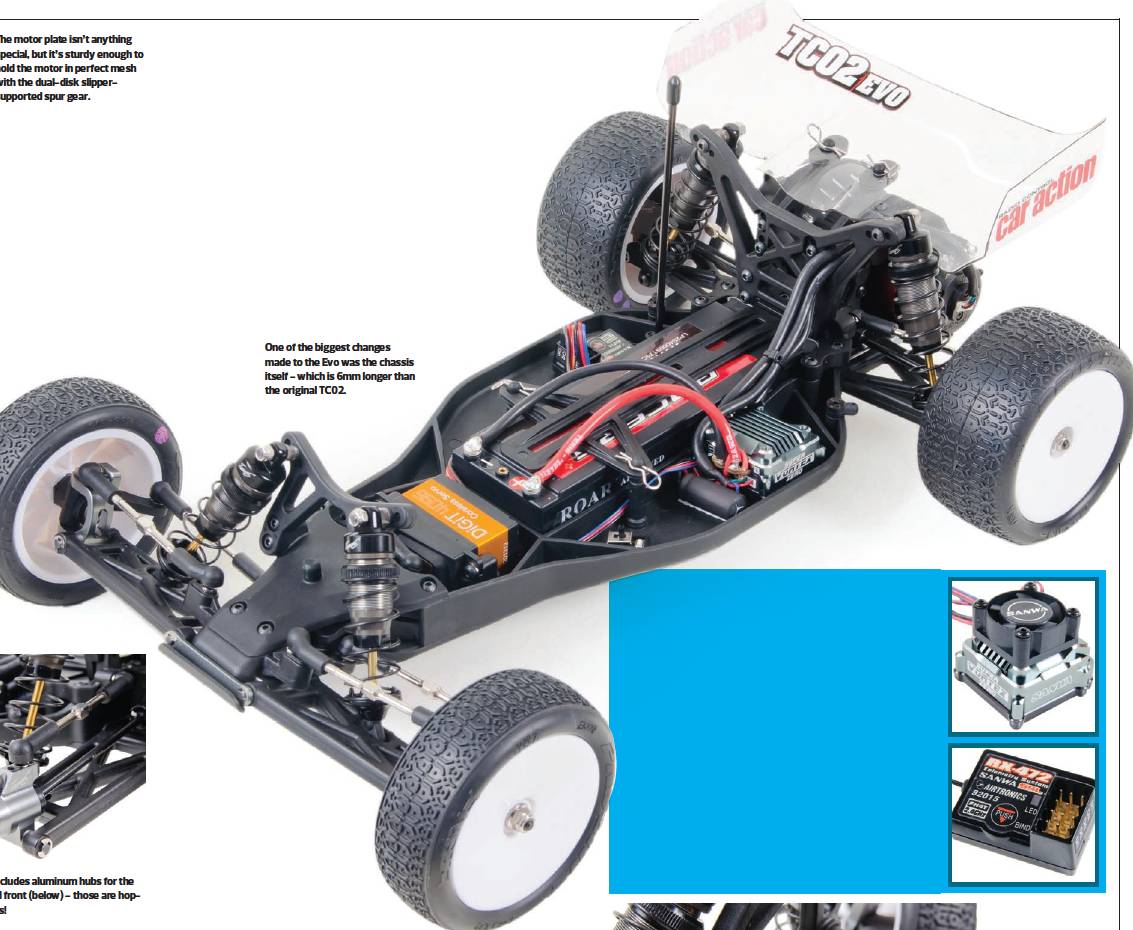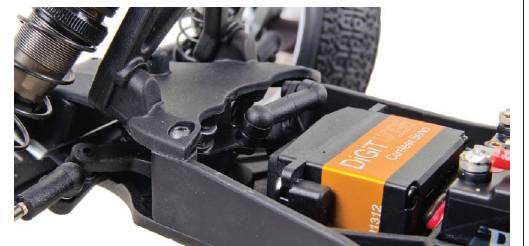It’s a tough world out there in the 1/10-scale 2WD electric class, and to be successful, you need the perfect tool to get the job done. Team C has been a major player in this field for a while now, collecting national championships all over the globe (including the ROAR Stock 2WD title in 2010) with their TC02 buggy. With a continued desire to refine the platform, Team C gave the TC02 a facelift to give it a more modern look and implement current trends in the 1/10-scale class. The result: the new TC02 Evo. The Evo is strikingly different from its predecessor, with a laundry list of changes to the chassis, suspension, transmission, and even the body – all designed to make the car faster, tougher, and more efficient. As the name “Evo” implies, this car is the evolution of the TC02 platform and each of the changes on this kit are the result of Team C’s involvement in racing with the world’s best. They’ve watched as their competitors’ cars have changed to suit the challenges of competition, and they’ve followed suit to provide the best possible car. Team C has done their job on supplying a killer buggy, so let’s check it out in action.
NEATLY ARRANGED DRIVETRAIN
One of the most effective parts of the Evo is its drive-train. The 3-gear tranny has a very usable 2.6:1 internal ratio, which makes it easy to gear any motor to any track condition you might encounter. The ball differential uses 12 balls to keep the action super smooth and prevents any slip under hard acceleration. Also, an optional gear diff is available for extra durability. The included 80-tooth spur gear, idler, and main gears are made of polyaramid plastic (also used in bulletproof vests) to ensure a buttery smooth mesh and major strength. The 3mm aluminum motor plate does an exceptional job dissipating motor heat and has plenty of room to fit the biggest pinion you can find for that optimal 17.5-class gear ratio. If you plan to use a modified motor, the dual-plate slipper clutch is easy to adjust and will help you tame the beast and connect the power to the ground. Power is transferred to the wheels via steel CV-style driveshafts spinning on a full set of ball bearings.

The motor plate isn’t anything special, but it’s sturdy enough to hold the motor in perfect mesh with the dual-disk slipper-supported spur gear.
SUPERBLY SUSPENDED
The Evo’s suspension allows you to fine-tune for any track condition thrown your way. The high-volume 12mm big bore shocks feature aluminum-threaded bodies for exact adjustment and super durable aluminum top and bottom caps – often optional for other cars. The front suspension arms have two shock mounting positions and hinge on a pair of aluminum C-hubs (again, typically an option for other kits but standard on the TC02 Evo) with two holes to adjust turnbuckle length. The rear arms offer two shock mounting positions and mount aluminum rear hubs that can be moved fore/ aft on the hingepin to adjust the wheelbase. The hubs feature top-mounted ball studs with three possible mounting holes for multiple camber link length and roll center options. The thick plastic shock towers offer three shock mounting positions and withstood more than a few hard crashes, thanks to their thick and durable design. All in all, it’s not the most adjustable car in its class – but there are enough options to tune the TC02 Evo to varying track conditions.

The TC02 Evo includes aluminum hubs for the rear (above) and front (below) - those are hop-ups for most kits!
COMPOSED COMPOSITE CHASSIS
The TC02 Evo features a lightweight composite plastic chassis that serves as a solid platform. For added stability on rough tracks, the Evo’s chassis is 6mm longer than the old car. The narrow width has just enough room for your electronics to mount as close to the center line of the chassis, which is necessary in order to keep chassis roll to a minimum. There are separate pieces on either end of the chassis that can be replaced should they ever break in a crash. The front piece mounts the steering components and front suspension, while the back piece mounts the transmission and rear suspension. When outfitted with a “shorty” pack, the chassis’ battery tray has enough room to run the battery all the way forward (which is what I ended up doing), with the speed control tucked neatly behind.

One of the biggest changes made to the Evo was the chassis itself - which is 6mm longer than the original TC02.
TOTALLY ADJUSTABLE STEERING SYSTEM
Driving a consistent racing line around the track with the TC02 Evo is not a hard thing to do thanks to its precise steering system. The plastic dual bellcranks house ball bearings and incorporate an adjustable spring-loaded servo-saver. The stock spring tension allows a bit of give should you ever get into a crash, which is perfect for beginner drivers, but does deflect in turns during high-bite conditions. The servo-saver can be easily adjusted in order to reduce deflection, though the steering servo may be put in added risk. The steering rack incorporates two adjustment holes to allow you to change the Ackerman position, which makes a big difference in how the car attacks corners. Easily accessible turnbuckles connect to the steering blocks and allow quick toe-in/out adjustments.

The mounting options on the steering rack make for very useful Ackermann adjustments.
Programmable speed controls are nothing new, but exploiting programmable features has always meant button-pushing or a PC hookup in the pits. No more—now you can do it on the fly from your transmitter. Or, you can with Airtronics’ new setup, at least. The Super Vortex ZERO speed control and Sanwa Synchronized Link (SSL) system offers the ability to change the adjustable parameters of the speed control in fine increments via the M12 transmitter’s CODE AUX function. The RX-472 receiver also supports telemetry and will display speed or RPM, speed control temp, motor temp, and battery voltage right on the M12’s screen. I was able to change the speed control timing and dial-in the proper amount of braking strength in the middle of a practice run right from the drivers’ stand, saving time and hassle versus a trip back to the pits. If you’re rocking an M12 and like to tweak and tune your speed control, the Super Vortex ZERO is worth a look.
